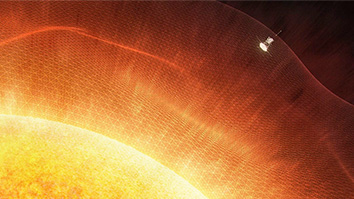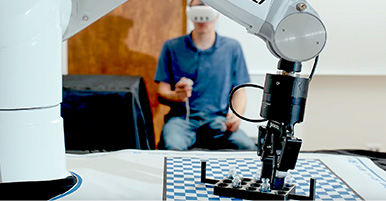Citation
Olafsen, L. J., Bain, L. E., Bewley, W. W., Vurgaftman, I., Meyer, J. R., Lee, H., & Martinelli, R. U. (2011, February). Room-temperature 4.0-μm broadened optical pumping injection cavity lasers. In Novel In-Plane Semiconductor Lasers X (Vol. 7953, pp. 224-231). SPIE.
Abstract
The optical pumping injection cavity (OPIC) laser concept was developed to enhance the efficiency of optical pump beam absorption, and this work focuses on epitaxial configurations designed for broadband absorption around 1850 nm, an optimal pump wavelength for transmission through GaSb substrates that allows for epi-down mounting for improved heat management, while minimizing the photon decrement. The OPIC devices presented in this work have InAs/GaSb/InAs/AlSb type-II W active regions with a thicker GaSb/AlAsSb distributed Bragg reflector on top in order to enhance reflection back into the active region for epi-down mounting. Results are presented for optical pumping at 1850 nm as well as for resonant optical pumping, as the cavity resonance varies with temperature due to shifts in lattice constant, refractive index, and gain. Pumping at 1850 nm resulted in lasing from 78 K up through 310 K. At 78 K, the actual pump cavity resonance is ~1840 nm, and with increasing temperature the resonance shifts to longer wavelengths beyond 1850 nm. Emission wavelengths range from 3.59 μm at 78 K to 4.01 μm at 310 K for 1850 nm optical pumping. The broadened OPIC configuration presents a distinct advantage over earlier reported OPIC devices as the broader resonance allows for efficient emission across a wide temperature range for a single pump wavelength (e.g., 1850 nm), providing over 400 nm of wavelength tuning. Results will be compared with a second broadened OPIC with emission wavelengths beyond 4 μm that temperature tunes across the carbon dioxide spectral line at 4.2 μm.


